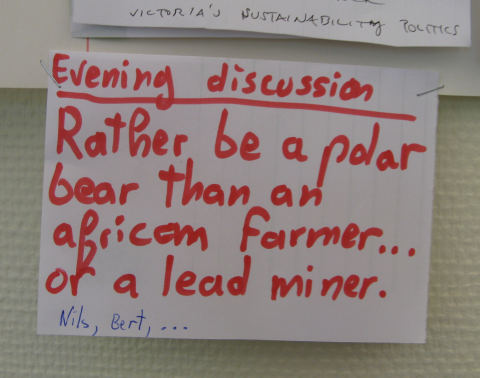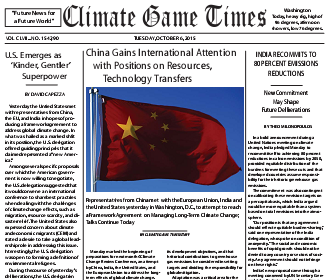It seems like a good time for another installment to the regional climate initiative roll call.
Alaska signed on as a WCI observer in 2007.
Like many states, Alaska has completed inventories of GHG emissions and potential climate impacts and identified early action items. Impacts are addressed in a joint commission report. I’ve read or skimmed a number of similar efforts from other states, and I have to say that this is the least coherent. It summarizes,
As has been often repeated, the State of Alaska is at the leading edge of impacts resulting from a warming climate. The Commission has recognized many negative and expensive effects of anticipated climate change. There are potential, positive eventualities, as well. The Commission’s concern over a reduction in federal spending implies an increased level of state spending may be in demand.
The report then scrupulously focuses on the positives, and stuffs the negatives to the back of each section. Unlike some states’ efforts, early actions identified by Governor Palin’s climate subcabinet focus exclusively on adaptation.
A mitigation working group is just getting started on a catalog of policies. The group’s first meeting notes contain a statement of purpose from commissioner Hartig:
The Governor appointed this committee because:
- No debate on climate change, it’s now
- Relatively small changes in atmosphere have significant effect on the environment.
- Warming will have effects on habitats
o Less sea ice
o More intense forest fires, more insects
o Change in distribution of species
o Appearance of new species.- Our world shares one atmosphere ’“ there’s no opting out
- We can build strategy from ground up, without unintended consequences
- We all must take responsibility
- The inventory shows the effects Alaska can have are unique and shows opportunities
- Emissions reductions may not be difficult and there could be many ancillary benefits
- If we fail to act there could be repercussions in the market
- State lead-by-example will be an important part of state government leadership
- Governor wants info and analysis of cap-and-trade, how it affects residents of Alaska
Among other things, I think Alaska’s efforts illustrate a common difficulty in climate policy: complex instruments like a cap & trade system require a major market design effort, which is hard for a state of 670,000 inhabitants to sustain. Small states either need to pursue simpler instruments (like a carbon tax) or pool their resources.
Near and dear to me is another state, small in population and big in resources. Montana has followed the CCS framework, preparing a GHG inventory and action plan. As elsewhere, there’s lots of detailed analysis, but not much evidence of models to glue it all together.
The appendices of the action plan cite:
- EPA’s WaRM model, for tracking and reporting GHG emissions from waste management practices.
- EPA’s MOBILE6 model, for GHG and other pollutant emissions from vehicles.
- Lifecycle analyses, including GREET, examining the implications of a transition to coal-to-liquids transport fuel (CTL) – particularly relevant given Montana’s huge coal reserves (120 gigatons) and synfuel aspirations. The basic message, nicely discussed by Brandt & Farrell, is that use of CTL and other low-grade petroleum resources could lead to significant recarbonization of energy use, even with CCS.
RGGI
I took a brief look at RGGI in the first installment. Now trading is about to launch, with an initial auction on September 25. Individuals can bid if they have an account on the allowance tracking system (felons need not apply though). New York DEC has a useful brief explanation of the market. Significantly, NY is auctioning nearly 100% of allowances. However, it’s also one of four states that didn’t get their act together in time for the initial auction.
RGGI futures are now trading on the CCX, barely above minimums because the market is overallocated, with allowances above historic levels through 2014. As of yesterday, CCFE RGGI futures for ’08 to ’12 settled at $4.48 to $5.01 on low volume. Evidently RGGI can retire allowances that fail to meet the auction reserve price, but changing underlying allocations could take up to three years.


